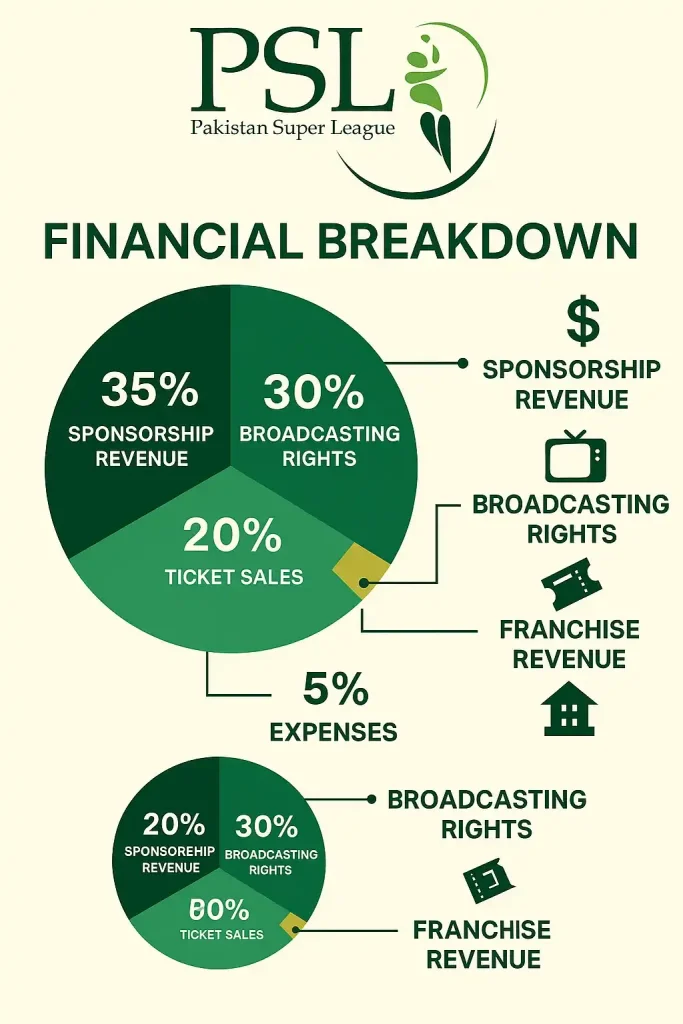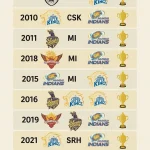
Considering the PSL’s net worth, it’s not only how much the league is worth on paper, but also the astounding transformation of a cricket tournament into one of the most valuable commercial properties in South Asia’s sports industry. Pakistan Super League (PSL) was launched in 2016, and it began with a fair share of skeptics. There were rampant security concerns and foreign-hosted matches for the initial seasons. Revenue streams were fragmented. But almost a decade later, it’s not just wrestling with survival anymore, it’s thriving. Its valuation now reveals a lot about strategic growth, brand resilience, and long-term promise.
The Rise of PSL: From Uncertainty to Unstoppable
The Pakistan Super League struggled with a legitimacy test in its early years, particularly because it did not host a single match in Pakistan during its first few seasons. This certainly did not grant PSL the same homegrown fanfare as the IPL. Regardless, the PCB was able to implement his vision owing to media investments and franchise backing. By the time PSL returned to Pakistan in 2020, it had fully matured into more than just a cricket product; it had become a national treasure.
PSL currently stands with an estimated cumulative net worth of $350–400 million. This positions it among the highest tier of franchise cricket assets in the world, only behind IPL and, depending on the metric used, sometimes BBL. However, it is PSL’s financial architecture that garners more attention than the spotlight figures.
Table 1: Estimated PSL Financial Snapshot (2024–2025)
| Category | Value (USD) |
| Overall League Valuation | $375 million |
| Average Franchise Worth | $45–55 million |
| Broadcasting Deal | $45 million (3 yrs) |
| Sponsorship Pool | $20 million |
| Prize Money Pool | $3.5 million |
| Player Salary Cap | $1.2 million/franchise |
These numbers, while modest compared to India’s IPL, are still enormous when you consider Pakistan’s economic backdrop and market size. For a country that often battles financial turbulence, PSL’s ability to attract consistent investment is significant.
Franchise Valuation: Who’s Worth What?
Valuing franchises often leads to debate; however, in the case of PSL teams, there are a few key considerations. The urban centers, as well as the branding associated with the Karachi Kings and Lahore Qalandars, enable them to capture unparalleled value. Islamabad United also ranks relatively high due to strong financial performance, successful marketing, and entrenched stakeholder support. There are outliers, too, as is the case with the Multan Sultans, who joined the league as an expansion team in 2018. However, with strategic digital marketing integration alongside a title win, their valuations saw a surge.
Performance analytics are key to any franchise; however, in this case, there is a lack of providing commercial value through media exposure, sponsorships, and the social media footprint, along with the personalities of the owners.
Table 2: Estimated Franchise Net Worths (2025)
| Franchise | Estimated Worth (USD) |
| Karachi Kings | $58 million |
| Lahore Qalandars | $55 million |
| Islamabad United | $52 million |
| Multan Sultans | $48 million |
| Peshawar Zalmi | $46 million |
| Quetta Gladiators | $43 million |
It’s important to note that these are projections — precise figures are closely held by the PCB and franchise stakeholders.
The Revenue Puzzle: Where the Money Comes From
Media rights, both international and domestic, remain PSL’s most critical revenue streams. Moreover, the $45 million broadcast deal from 2023 to 2025 indicates promising revenues. Moreover, digital streaming services, sponsorship deals, ticket sales (currently moving from virtual to physical), and retail sales also contribute to overall revenue streams. With sponsorship deals signed with HBL and Jazz, we can already observe the transformation of PSL events into massive marketing juggernauts.
It is also important to mention that player auctions, albeit low spend periods, become high engagement periods, transforming into secondary revenue sources. Even though the league is structured on a franchise-based model rather than a pure auction format, branding levels plasma and diamond allow for aggressive talent circulation and hype dissemination.
A League for the Youth: The Cultural Impact and Economic Potential of PSL
It is not merely the financials that separate PSL from the rest of the leagues; it is also the cultural influence it brings. For the urban youth of Pakistan, PSL is now an identity marker. It is something that is celebrated on the streets as vendors are seen selling franchise t-shirts, cities erupt during their clashes, and hashtags related to the event are being globally trended. Among myriad other videos, PSL memes, commentary videos, and fan edits dominate TikTok and Instagram during the PSL season.
It has, moreover, created a buzz of economic activity for professionals, including those who are in hospitality or small vendors selling team merchandise. But more importantly, the stadiums in Lahore and Karachi have transformed from being simply venues for hosting events to marketing cathedrals.
The Global Angle: Investigating the Financial International Obligations of PSL
The PSL presents unique international financial difficulties. While the IPL has been able to capitalize on massive global viewership and has no competition during its season, PSL is unable to penetrate international markets. There are some positive signs in digital engagement through streaming partnerships, fantasy leagues, and monetized YouTube content, as seen with global players like Rashid Khan and Alex Hales.
In Pakistan, there is also the potential to arrange foreign air matches, perhaps during summer. Proposed neutral venue matches like Dubai or the UK are self-sponsoring, thus monetizing the asset.
Final Thoughts: The Future of PSL Net Worth
So when we talk about PSL net worth, we’re really talking about a league that has defied odds. It’s not just about balance sheets. It’s about narrative power, fandom, and sustained belief. PSL doesn’t chase IPL-like riches — it builds on what Pakistan offers: raw talent, emotional fandom, and a hunger to be seen on the world stage.
The next five years will decide whether PSL can truly become a global property or plateau as a national obsession. But either way, its journey is already a business case for how cricket — even in unstable markets — can be both profitable and beloved.
And perhaps that’s the most valuable asset of all: credibility.

Meet Arjun Kushaan, a passionate cricket analyst at The Cricket24x7. From street matches in his childhood to competitive college tournaments, cricket has always been a central part of Arjun’s life. With a strong background in data analysis and a natural affinity for numbers, he brings a fresh, analytical lens to the game. At The Cricket24x7, Arjun blends his deep love for cricket with his data-driven approach to deliver detailed insights and well-rounded coverage for fans of the sport.






